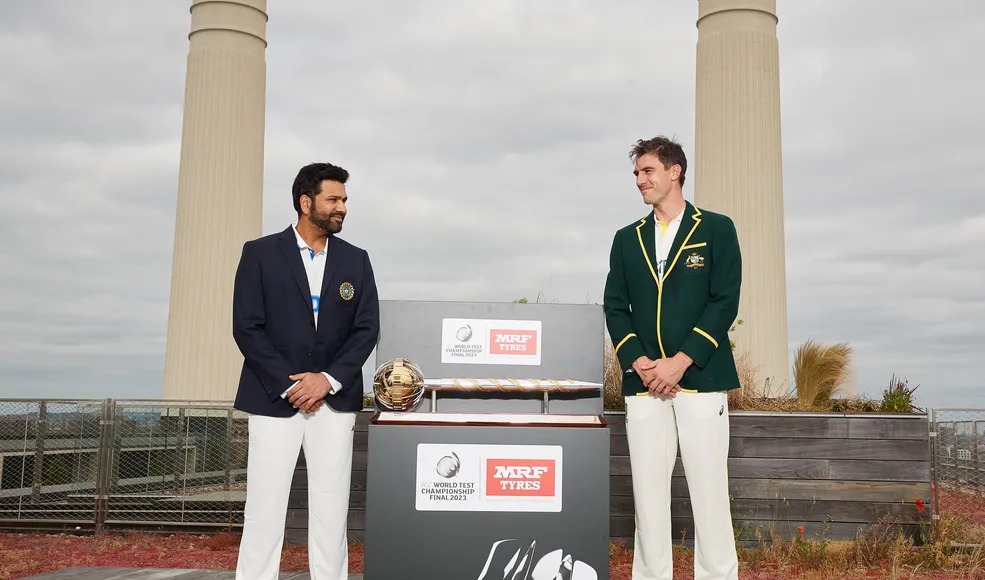
International cricket teams compete for national pride and personal glory. While that should be the primary motivation, let’s not forget that international cricketers are professionals and have a plethora of choices to monetise their limited 10-15 year-long shelf life.
For the upcoming World Test Championships (WTC) final, India and Australia are competing for US$1.6M in prize money. That is 40 percent of the winner’s cheque at the previous ODI World Cup that was held in England in 2019, and the same as the T20 World Cup in 2022 that England won in Australia by defeating Pakistan.
To compare the effort-to-reward ratio, Jos Buttler and his team had to play seven matches consisting of a theoretical maximum of 280 overs spread over a three-week period in the T20 World Cup to win the US$1.6M – that translates to about $5,714 per over for the T20 team.
The path to victory for Eoin Morgan’s team in 2019 included 11 matches consisting of a potential 1,100 overs spread across 45 days to win the prize money of US$4M, and that translates to about US$3,636 per over for the ODI team.
For the WTC final, depending on who lifts the mace this weekend, the journey would either be one of 4,950 overs (for Australia) or 4,050 overs (for India) to win the US$1.6M. That would work out to $323 per over for Pat Cummins’ boys, or $395 per over for Rohit Sharma and his side.
And mind you, while Test cricket’s pace may not be as intense as its younger cousins, it tests one’s stamina over four to five back-to-back days of gruelling competition.
Whilst it’s hard and unfair to compare cricket across the three core formats and the remuneration is linked to the audience eyeballs the game can attract, it is safe to deduce that the stakes are too low for the World Test Championships given the sheer effort involved.
Also Read: Lessons India need to Learn from 2021 WTC Final, and Other Near-Misses
Even at the championship level, the ICC is investing a mere US$3.8 Million of prize money for the two-year WTC cycle across the nine teams, which is just about 0.6 percent of its annual revenue of US$600 Million.
How does one protect the original and purest format of the game with such relatively meagre investments?
How and why would the management teams of the financially weaker cricketing boards focus on red-ball cricket? And why would today’s youngsters not focus solely on white-ball cricket given the tantalising prospects?
In today’s cricketing era, it isn’t unimaginable for a decent international cricketer to earn at least a US$1 Million from a couple of global T20 franchises across the IPL, SAT20, CPL, BPL, PSL and the soon-to-be-launched MLC in the USA.
This is individual remuneration, separate from other match prizes, endorsements and advertisements that have a stronger affinity with the shorter and more glamorous form of the game.
As we prepare to witness a high-octane WTC final at The Oval starting on Wednesday, the second one of its kind, the ICC must ponder hard on how it can make the Test Championship more attractive and lucrative, not just by raising the stakes through higher prize money for the WTC alone, but perhaps by also changing the international points system across formats.
Either we continue to heavily subsidise the Test format further through the revenues generated via white-ball cricket, or we design a hybrid points system that assigns weighted scores for bilateral tournaments across each format, with higher points for red-ball cricket. There would then be a prize-money pool to compete for, depending upon where one landed on this hybrid leaderboard.
Else, I fear that within the coming decade, the quality of Test cricket may dwindle as many more players either opt for the Jofra Archer-Jason Roy-Tim David mercenary route, prioritising T20 franchise cricket over Tests, or run the risk of missing out like Jasprit Bumrah because of excessive workloads.
For now, let’s hope the men from India and Australia compete hard at The Oval this week for the sake of their national pride and a rivalry that has risen several notches over the past two decades. The additional US$1.6 Million wouldn’t even move the needle for two of the richest cricketing boards, nor for most in their star-studded line-ups, who are blessed with million-dollar contracts from franchise cricket.
Also Read: Ashwin India’s Best Spinner, Must Play: Sourav Ganguly



